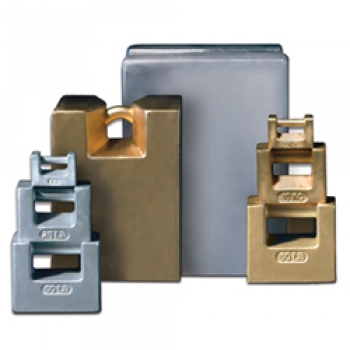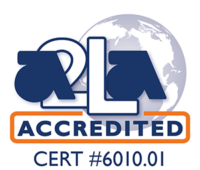
Frank called us to buy some Test Weights. I asked him what classification of test weight he was looking for and what kind of certification he needed. After a few seconds of silence and checking to make sure that Frank was still on the line, he told me he wasn’t exactly sure about either. He just thought “a test weight is a test weight” and had no idea about which certifications were required.
Are you like Frank? If so, don’t’ be embarrassed. Lots of Test weight buyers—even those who work in laboratories—often are not clear about these things. Here’s some basic guidance that helped Frank and will help you as you consider which certification to buy for a certain test weight.
1. What Is the Classification of Your Test Weight?
Every test weight has a classification, and that classification must be known before you can decide upon the certification required. The weight classification is usually dictated by the weighing device for which the weight is being used to calibrate. For instance, a commercial Class III device can be calibrated with “Class F” test weights. A garden-variety compact balance may require “Class 6” test weights, while a high-precision laboratory balance may require “Class 2” or even “Class 1”weights. The higher the precision, the lower the classification number. You can often find the classification of test weight required in the weighing device’s technical manual or in the laboratory procedures being followed.
2. Do You Need Certification at All?
After you know the weight classification, different test weights may require varying levels of certification, depending on how the weights are being used, what classification of scale equipment they are calibrating, and who cares about the documentation records (e.g., the government, an industrial standard, the QC department, etc.). Remember, it may very well be that no certification is needed at all. Certification is all about verifying and documenting accuracy. When deciding if you need certification, ask yourself, “Who cares?” If the person (or department or written standards) doesn’t “care” about certification, then you don’t either!
3. What Test Weight Certification Do You Need?
If you decide that test weight certification is, in fact, required, you will either need an “accredited” or “non-accredited” certificate.
Accredited Certificates
If you need an accredited NVLAP laboratory certificate to meet ISO/IEC 17025 & ANSI/NCSC Z540-1 requirements, you need an accredited certificate. The classification of your test weight will determine which you need.
- Calibration Certificate (CC): For ASTM Class 0, 1, 2, 3 and OIML Class E1, E2, F1 and F2, a CC is required. A CC meets all the requirements of the National Voluntary Laboratory Accreditation Program (NVLAP), provides traceability to NIST, lists the environmental conditions present at the time of calibration, and cites that the text was performed at an accredited laboratory.
- Traceable Certificate (TC): The TC in required for the following classes: ASTM Class 4, 5, 6, 7, NIST Class F, and OIML Class M1, M2 and M3. It provides the much the same information as the CC described above.
Non-Accredited Certificates
If your situation doesn’t require the certificates above, you only need to have a “Mass Value Certificate” or perhaps just a “Certificate of Accuracy.”
- Mass Value Certificate (MVC): You need this certificate if NIST traceability is required. The MVC only applies to certain classes of weights (ASTM 1-3; OIML, F1, F2), and it lists actual weight values, uncertainties, and tolerances.
- Certificate of Accuracy (COA): The COA is not traceable to NIST. It is a statement of accuracy, including the tolerance of the weight.
Frank found out that not all test weights are created equal. But with the guidance above, he was able to find out the classification of his weights and then the kind of certification he needed.

